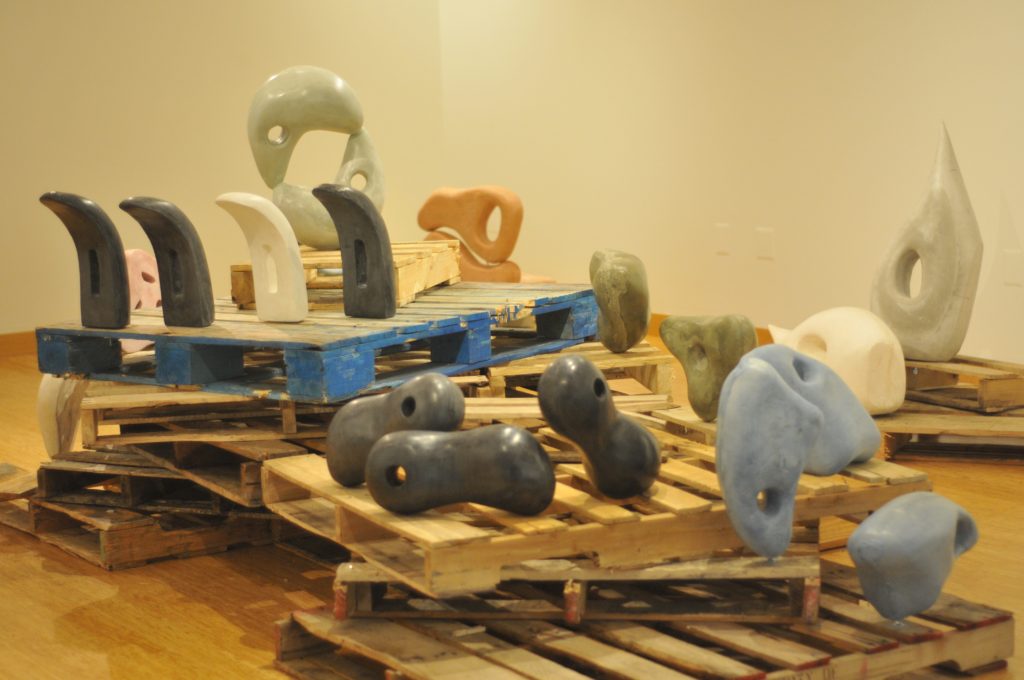Theodore Vadot ’19

The newly installed Shape of Things exhibit in the Crawford Campus Center Gallery features cement masterpieces made by the Honors 3-D Art class, taught by Hilary Hutchison.
The various shapes found in the gallery are inspired by Barbara Hepworth (1903-1975), a British sculptor who investigated how the abstraction of shapes allows them to interact with their surroundings. Additionally, Hepworth’s sculptures have a distinct characteristic in that they must include a negative space – a hole, of sorts, that perforates the sculpture. In this project, Hutchison explains, “[The project] gave students the opportunity to think about the creation of sculptural objects that function abstractly and aesthetically without the necessity of being representational or recognizable.”
The sculptures were the products of a five-step process. Hadley DeBruyn ‘20 elaborates, “Before we did anything on a large scale, we did sketches and different interactive compositions to come up with ideas. We also did a small clay maquette, which most of us followed for the rest of our project.” Maquettes are small sketches or models, in this case made of clay, that sculptors use to lay out their ideas on a miniature scale. Hutchison explains, “The process of sculpture has many layers beside the initial idea for a work of art.” The goal was to create non-representational pieces, just like Hepworth did in her sculptures, and the students could only achieve such shapes through steps of reflection and detaching themselves from inspirations of representational shapes.
Cat Spellman ‘19 initially had a hard time choosing a design; she explains, “It’s hard to make something abstract. Subconsciously, we are inspired by everything around us, and it’s difficult to try to let go of that and make a shape without following something familiar in our minds.” At first, Spellman wasn’t a huge fan of the concept of abstraction, but she adds, “It was cool to see how the different shapes could inadvertently be interpreted as a real shape, and not all of us agreed on what they looked like.” DeBruyn agrees, saying, “I think our class did a great job, and it was cool to see what different shapes and colors were selected by certain people.”
Laid out in the gallery, the Shape of Things exhibit includes recycled wooden palettes as sculpture stands, and the pieces are organized freely around the palettes, leaning and climbing on them, which plays a role in their interaction with their surrounding environment. Spellman exclaims, “Mrs. Hutchison told us, like, seven times, that our exhibit does not come off as a high school art exhibit, and that it is professional-looking.” Hutchison concludes: “I am proud of all of the work the class put into creating a beautiful installation.”
The collection of works, installed from December 3rd to December 20th, has gained a lot of attention from both students and teachers, including Schuyler Sices ‘19, who says, “I didn’t know a lot of my friends could make such cool art. Every time I pass by the gallery, I’m still impressed by how well-executed they are.”